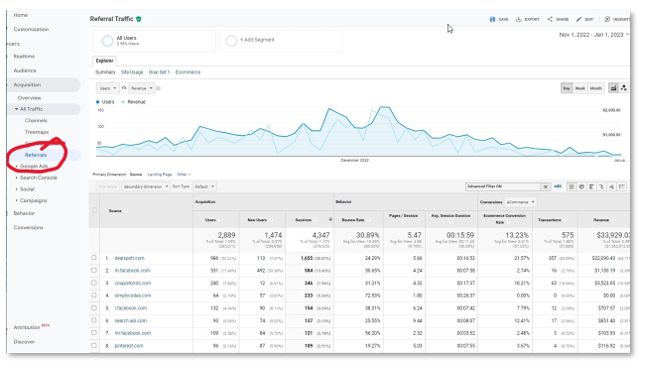 As a small business owner that relies on foot traffic for your business, you may wonder if your website is really doing anything for you. Sure, you understand in general that a website is important—if nothing else because you’ll look out of step with the times without one. But since you don’t have an e-commerce store, is the website truly moving the needle for your business? To answer that question, you need call tracking analytics.
As a small business owner that relies on foot traffic for your business, you may wonder if your website is really doing anything for you. Sure, you understand in general that a website is important—if nothing else because you’ll look out of step with the times without one. But since you don’t have an e-commerce store, is the website truly moving the needle for your business? To answer that question, you need call tracking analytics.
Digital marketing is often seen as being about pay-per-click campaigns, on-page optimization, technical SEO and getting online visitors to fill out a “contact us” form on the website. And that’s all true. But done properly, a good digital marketing campaign can tell you if your efforts are also generating phone calls.
Call tracking is done in Google Analytics with its Event Tracking tool. Google Analytics defines an “event” as actions ranging from viewing a video to clicking an outbound link to clicking a phone number. In this instance, you want it to do the latter.
Event tracking happens in Google Tag Manager and the code is written to pick up whenever anyone clicks the phone number on your site, thereby dialing the business. Once those clicks are tracked, Analytics can also follow where they came from, whether it’s organic search results, a paid ad campaign, an e-mail newsletter or a direct visit.
Implementing this tracking is straight-forward, but it will likely require getting your developer involved to write the code. There are also apps available—popular ones include Infinity Call Tracking, LogMyCalls and Easy Call Tracker—but they also cost money and if your developer doesn’t write the code, no one on your staff will know how to deal with any problems that arise.
The scope of call tracking analytics is limited. Your data will only pick up those people who call by directly clicking the number. In practice, that means the tracking is limited to mobile users. People on a desktop or tablet are far more likely to just pick up their cellphone after getting your number and your analytics won’t formally make that connection.
But just because that connection between a website visit and a phone call can’t always be formally made, it doesn’t mean there still aren’t important insights within Google Analytics. If you’re tracking the total number of calls your business receives, you can correlate that to the number of visits to the website, and particular pages within the website (i.e., the contact us form with the phone number).
As part of this study, you can fit your data on visits to the Contact Us page into a classic marketing funnel and get a sense of how many visits it takes to produce a paying customer.
Phone calls to the business are more valuable than a form submission online. Studies show that calls convert at 10-15x the rate of online submissions.
Furthermore, if you run a pay-per-click campaign, it’s becoming more common to run those ads exclusively to customers with a smartphone—ones most likely to call by clicking the number and thereby being picked up with Event Tracking.
So even though the tools of call tracking analytics aren’t flawless, they’re awfully good and they’re getting better. Calls from digital ads targeted to smartphones increased from 76 billion to 162 billion—by 110 percent—in the period from 2014 to 2019. Knowing how to track these calls is vital to a functional digital marketing strategy and can help you glean insights about how effective your marketing efforts are.
Want to know more about how call tracking can help your business? Call periscopeUP today at (443) 475-0787 for a consultation.







